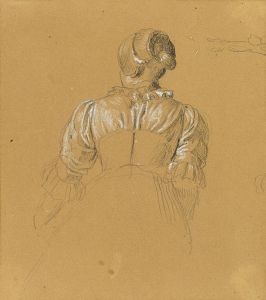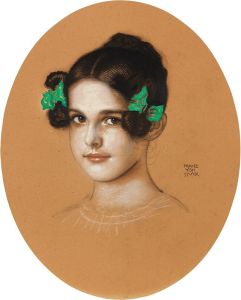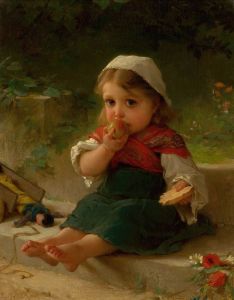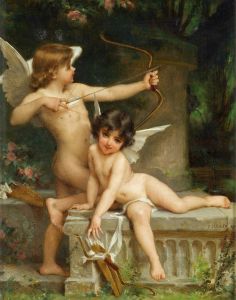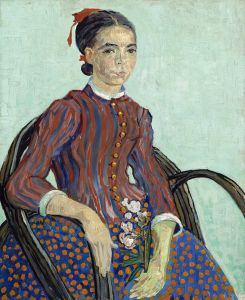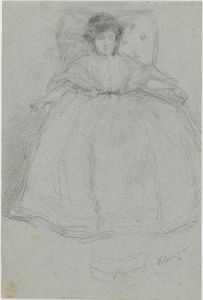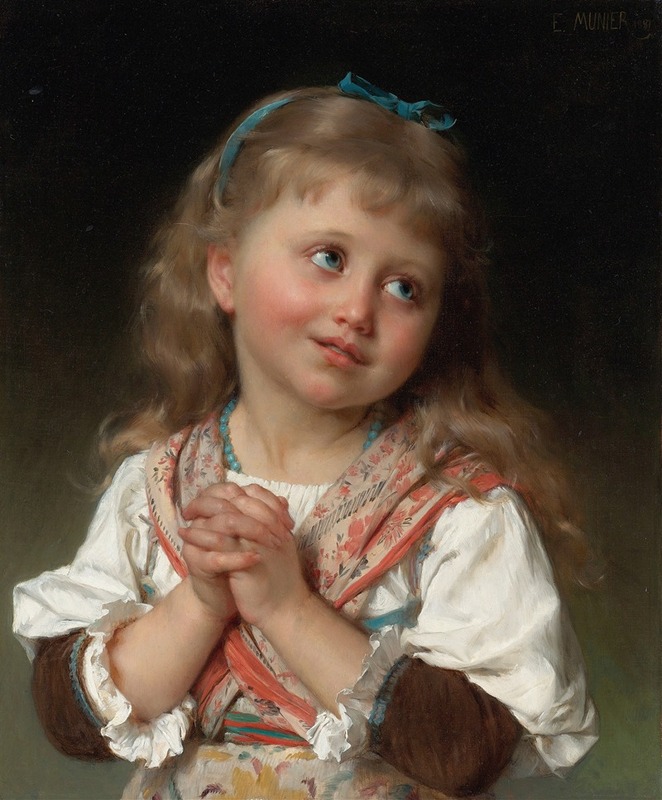
May I
A hand-painted replica of Émile Munier’s masterpiece May I, meticulously crafted by professional artists to capture the true essence of the original. Each piece is created with museum-quality canvas and rare mineral pigments, carefully painted by experienced artists with delicate brushstrokes and rich, layered colors to perfectly recreate the texture of the original artwork. Unlike machine-printed reproductions, this hand-painted version brings the painting to life, infused with the artist’s emotions and skill in every stroke. Whether for personal collection or home decoration, it instantly elevates the artistic atmosphere of any space.
Émile Munier was a French academic artist known for his detailed and realistic paintings, often depicting children and domestic scenes. One of his notable works is "May I?" which exemplifies his skill in capturing the innocence and charm of childhood. Munier was born in Paris on June 2, 1840, and he studied under the renowned artist William-Adolphe Bouguereau, whose influence is evident in Munier's meticulous attention to detail and his use of soft, delicate colors.
"May I?" is a painting that showcases Munier's ability to convey emotion and narrative through his art. The painting typically features a young child, often a girl, in a tender and endearing pose, asking for permission or seeking approval, which is suggested by the title. This theme of innocence and the gentle nature of childhood is a recurring motif in Munier's work, reflecting the artist's fascination with the purity and simplicity of youth.
Munier's technique is characterized by his smooth brushwork and the lifelike quality of his subjects. He often employed a soft color palette, which added to the gentle and serene atmosphere of his paintings. In "May I?" the use of light and shadow is expertly handled to create a sense of depth and realism, drawing the viewer into the intimate moment captured on canvas.
The painting is also notable for its composition. Munier had a keen eye for detail, and his works often include carefully rendered backgrounds that complement the main subject without overwhelming it. In "May I?" the background is typically understated, allowing the viewer to focus on the expression and posture of the child, which are central to the painting's emotional impact.
Émile Munier's works, including "May I?" are celebrated for their technical excellence and their ability to evoke a sense of nostalgia and warmth. His paintings were well-received during his lifetime, and he exhibited regularly at the Paris Salon, where he gained a reputation as a skilled and sensitive artist. Munier's dedication to his craft and his ability to capture the essence of childhood have ensured that his works remain appreciated by art enthusiasts and collectors.
Today, "May I?" and other works by Munier can be found in private collections and museums, where they continue to be admired for their beauty and craftsmanship. Munier's legacy as an artist who celebrated the innocence and joy of childhood endures, and his paintings remain a testament to his talent and his love for his subjects.
Émile Munier passed away on June 29, 1895, but his art continues to resonate with audiences, offering a glimpse into the tender moments of everyday life through the eyes of a masterful painter.





